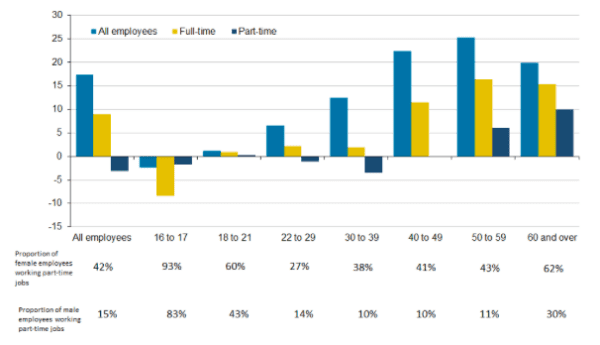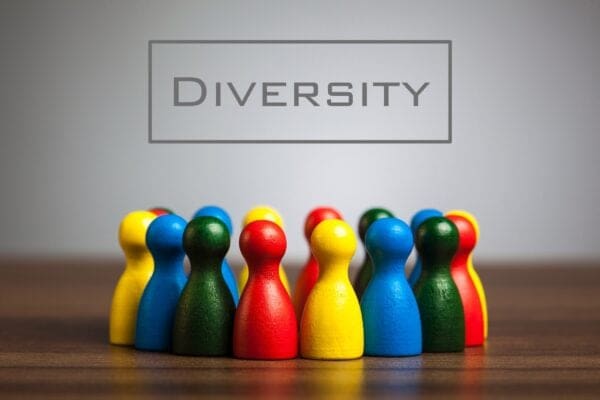Business Issues and The Contexts of Human Resources
The below is a module 5 submission for the CIPD Level 5 certification, kindly shared by one of our clients to help you on your own HR journey. Next is, Business Issues and The Contexts of Human Resources.
Contents
Part One – Understand the key contemporary business issues and main external factors affecting different organisations and the impact on HR.
1.1 Assess a range of different factors which impact on an organisations business and its HR function
Part Two – Understand how organisational and HR strategies and practices are shaped and developed.
2.1 Analyse the forces shaping the HR agenda
2.2 Compare different tools for analysing the business environment
2.3 Explain the key stages in strategy formulation and implementation and the role of HR 2.4 Examine HR’s contribution to business ethics and accountability
Part Three – Know how to identify and respond to changes in the business environment.
3.1 Evaluate business performance and the role of HR in business planning and the change management agenda
3.2 Assess and utilise different sources of business and contextual data for planning purposes
7 Other Submissions
Check out the other 7 module submissions here:
- Module #1 Improving Organisational Performance
- Module #2 Contemporary Developments in Employment Relations
- Module #3 Employment Law
- Module #4 Developing Professional Practice
- Module #6 Using Information in Human Resources
- Module #7 Employee Engagement
- Module #8 Managing and Co-ordinating the Human Resources Function
1.1 Business Issues – A Range of Different Factors Which Impact on our Organisations Business and its HR Function
There are a range of internal and external factors that could impact our organisations business and the HR function and this can be highlighted by conducting a STEEPLE analysis:

(marketing-audit-steeple-analysis | Amberry Marketing – Manchester, n.d.) (marketing-audit-steeple-analysis | Amberry Marketing – Manchester, n.d.) “Social factors are any variable which arises from culture, environment, community, family, organisation, society, government, the state, the media, technology , religion, ideology, discourse, language, communication, and which influences the individual to think and act in a certain way”. (Whitehead, 2017).
A good example of a social factor is social media. Over time as technology evolves, lifestyles change and adapt. If you look at a business 30 years ago we would have been using paper files for storing information with no real rules around the governance of it, we would have made telephone calls to resolve issues and ask questions of other individuals and departments. Now, the majority of companies like ours, will use electronic filing systems taking into account such things like GDPR regulations, we prefer to email a query or question even though it generally takes longer to receive an answer and we will purchase goods through a website in favour of telephoning someone.
This could have a negative impact on our relationship building within teams and businesses so not all factors are positive. I believe that technological factors are the major influences of our time and link to a majority of the other factors listed above. Within our organisation we are continuously looking to develop new technology to aid in our vision of being the best within the telematics industry. Even though technological industries are not listed as one of the fastest growing, without technology, innovation and research, we would not evolve processes, be able to analyse quickly to get better results whether for an advancement in the market place or for health organisations to aid in cures for illnesses.

There are lots of economic factors that can impact our organisation such as us being FCA registered and how we have multi-national offices all over the world. Our finance department is always looking at exchange rates, interest rates and because we are a telematics insurance company, our marketing department are constantly evaluating consumer spend by analysing trends that could increase our growth. Looking after our environment is a huge deal at the moment with more companies investing in better choices to help in maintaining it. We are heavily invested in sustainable living and offer incentives to our employees if they cycle to work and don’t drive or take public transport.
We have a Corporate Social Responsibility policy in place where we have created a culture that supports diversity and equality of all backgrounds. We promote learning and offer online and classroom courses for development in all areas ranging from Business Administration to End of Life Care. We fundraise every year and change our choices so we can give more back to charities and we offer paid days off to all employees for any volunteering work they wish to take part in; either independently or company arranged. As our company is international (by parent) we are always looking at the foreign exchange rate and the need to adhere to the many government policies; the UK government policy is very different to the Japanese or German government policies.
I believe our organisation is very lucky in some ways as we have many contacts in different countries and can therefore, source the majority of goods and parts we need in the most efficient and cost effective way. Being compliant and following the law is obviously very important and we always need to consider any new changes that have been implemented before any decisions are enforced. Health and Safety is of paramount importance and essential to any organisations success; if we don’t look after our employees and customers, we could fall foul and loose them. The legal factor in the STEEPLE analysis covers such things as Consumer Law, Discrimination Law, Health and Safety Law as well as Employment Law and all of these together should constitute for a healthy, compliant and rounded business.
(CIPD, 2020) Ethical factors could include the company reputation; how to maintain a good and healthy one or if it isn’t so good, how can that be turned around and changed into a positive one. Our People and Culture Director always says “trust is yours to lose, not gain” and by having this attitude towards his team members, we value the trust bestowed upon us. We have policies in place to support employees and how they can be compliant; we have online learning to help them understand the business requirements around fraud, anti-money laundering along with other training.
Sticky Learning ® is 7 times more effective than 1-day training courses. Plus, you will get a Chain of Evidence proving your Return on Investment. Discover soft skills training that changes behaviours long term.

2.1 Business Issues – How Can We Analyse the Forces Shaping the HR Agenda?
There are many forces shaping the HR agenda such as changes in the labour market and globalisation. We now have so many changes to keep up with, businesses need to ensure they are fully aware and remain astute at all times. In line with senior managers, it is the role of HR to maintain foresight and enable departments and businesses as a whole, to develop a robust strategy and plan to help achieve objectives no matter what circumstances arise.

If we look at changes in the labour market and take the abolishment of retirement age in 2011; HR would have taken that into account and the fact that individuals could be working for much longer depending on the nature of their role and other examples of this are the fire service age restriction of working or if a role was too physical for an older person such as in construction (Working after State Pension age, n.d.)
This affected succession planning, pensions, benefits and it could have potentially pushed employees that were looking for the next step up, out the door as they may have seen their opportunity fade away. Demographics are now posing a challenge due to the change in immigration rules proposed by Boris Johnson. HR will need to enforce the rules and guidelines with a new strategy, that could lead to a change in recruitment process, which recruitment agencies are used and who would be sponsoring the individual which obviously has a financial impact.
IR35 is another huge change to the way businesses work. If you look at our organisation, we work on lots of projects and we generally employ external contractors either independently or through an agency, however due to the regulations being set out by IR35 where tax and NI are being questioned, it will no longer be viable for us to use an independent contractor due to financial implications and this may limit our knowledge base.
2.2 Business Issues – What Tools Can be Used for Analysing the Business Environment?
The two main tools I find useful for different types of analysis are PESTLE and Porters Five Forces. A PESTLE analysis (or STEEPLE) according to the CIPD is “an audit of six external influences on an organisation” (PESTLE Analysis | Factsheets | CIPD, 2020). PESTLE looks at Political, Economic, Sociological, Technological, Legal and Environmental elements of the workplace where as Porters Five Forces looks to understand the competitiveness in an organisation so a strategy can be formulated with foresight.
Porters Five Forces helps to identify different structures of industries, can be applied to any section of the economy and helps to identify why different business areas continue to be profitable. This analysis tool should be mainly used to gain competitive advantage and to highlight potential areas of weakness against other businesses. Whereas PESTLE “looks at the factors in a nation or marketplace, and examines how those factors affect the consumer” (Hall, 2019) Porters Five and Pestle have advantages and disadvantages:
| Porters Five Forces | PESTLE | ||
| Industry competition | The more competitors there are, the less freedom the organisation has to monopolise the market | Political | Legal changes from either the government or acts of parliament could impact choices made in employment law |
| New organisations in the industry | In the same way as the above, if there are more companies like yours, they will lose some of their power and freedom | Economic | Interest rates, unemployment rates and exchange rates will financially impact decisions made |
| Supplier control and power | If there are fewer companies like yours, the more you have control of the market prices etc | Sociological | Demographics, society splits and age could impact employment |
| Customer control and power | If there are lots of companies in one industry the customer can drive the prices down by shopping around and forcing you into being more competitive | Technological | What technology is available and how could it impact your business |
| Danger of alternatives | There is always a threat of someone developing a better product or a cheaper one that does the same job | Legal | Laws such as Health and Safety, Employment and Immigration could all affect a business depending on the nature of it |
| Environmental | Things such as weather could affect a business or law around pollution due to driving etc | ||
2.3 Business Issues – The Key Stages in Strategy Formulation and Implementation and the Role of HR are:
Before a plan or strategy is implemented, we should look at where we are as an organisation and understand our strengths and areas of weakness; and we could do this by using a SWOT analysis to highlight the Strengths, Weaknesses, Opportunities and Threats. An example of this could be:

Or we could use a PESTLE analysis like the one below (Murphy, 2018): Political:
- Various laws enforced in different countries of interest
- Trade barriers, rules and regulations
- Taxation costs
- Employee salary costs and the differences in employment law
Economic:
- Can the economy support an industry change (if it hasn’t already been introduced)
- Exchange rates that could impact company profit
- Employment levels e.g. are they high where many roles could be offered to a multi-skilled population or are they low where many unemployed individuals are unskilled and therefore would be more costly and need training
Social:
- What are the various age groups of the population
- Can the population afford the product being brought to market
Technological:
- Are there competitors with the same or more advance technology
- Would the technology being offered improve businesses or disadvantage them
Legal:
- Health and Safety laws would need to be looked at for any negative variation
- Fair pricing for the product would need to be looked at
- Social Responsibility for others needs to be investigated
Environmental:
- Will the telematics work in changing climates
- Will telematics negatively impact on the climate
- What are the industry recommendations of pollution acceptance
These could then be used as reference templates to ensure we cover every angle and don’t forget about something important. We then need to list or mind map where we want to be in the future and capture as much information as we can, no matter how small it may seem as it may be the key connection we are missing, e.g. Company five-year plan objectives:
- To be the leading market in Telematics provider through Europe by 2025
- To lead the way in connected mobility
- Achieve £5 million profit by 2025
- Grow the client base by 25%
- Develop relationships and customers in America by 2025
- Have a solid and happy company with a good work/life balance for all employees
- Not every goal needs to be financial, especially in todays climate where stress is on the rise
- Develop a better benefit structure
- Align all employees onto the same employment contract
Once all processes are completed, an evaluation can be started on highlighting quick wins, commonalities and areas of particular focus. A systematic plan can then be created with a time line of what should be done by who and when. I believe it is important to expect plans to change and grow as developments are made so it is imperative that the project lead is aware of this and can adapt accordingly.
Once a solid plan is devised, it can be implemented ensuring there are control measures and evaluation points included within the time line. This can be used as reflection for any changes that were not seen as and when developments happen. HR would assist with analysis, involve all key stakeholders and when needed, ensure compliance of rules, regulations and law are upheld.
We would ensure the culture and brand is not negatively impacted by any proposed change, update policies, process documents, evaluate training needs, wellbeing of employees and help put in place KPI’s or relevant measurement stat comparisons.
2.4 Business Issues – What Would HR’s Contribution to Business Ethics and Accountability be?

HR play a pivotal role to business ethics and accountability as we promote necessary information like code of conduct and ensure it has been created with a high level of behaviour acceptance that embodies the companies culture and values as well as rules and regulations set by various governing bodies such as the Financial Conduct Authority. HR uphold and maintain the link to values, role modelling, rewarding benefits as well as embedding employee legislation that needs to be adhered to.
We are the champions for all areas of the business, experts in our field and advocates of taking the organisation into the future whilst leading by example and ensuring values are kept. By creating policies and procedures, HR can ensure corporate responsibility is maintained by everyone; especially in today’s challenging world.
CIPD (Ethical Practice and the Role of HR | Factsheets | CIPD, 2019) suggest that:
- “An open culture improves morale”
- “Good relations with customers lead to an enhanced reputation”
- “Ethical companies outperform their peers financially in the long term”
HR are generally responsible for communicating changes, trend setting, leading by example and giving visibility to employees; whether it is to senior managers for planning, or the wider organisation to help them understand a future vision whilst remaining engaged in the company values and culture.
Creating an ethical business is not only important to attain a good reputation, it helps provide solid foundations for relationships within our organisation so employees can live and breathe the ethics code and ensure everyone does what they should be doing; if some employees aren’t following it, they should be spoken to and dealt with accordingly.
Any company, no matter how big or small will not succeed without the right calibre of employees who are dedicated and invested in the future of the company. HR need to ensure ethics are incorporated into our policies, end to end recruitment process (including onboarding, induction and offboarding), sickness and performance management alongside all other parts of the business.
Offering volunteering, training to raise awareness of good ethical practices such as money laundering and anti-bribery are all good ways to ensure our business remains truly ethical and isn’t just seen to be on the face, with no actual substance and depth of ethical practice. Best practice research will be current and up to date to ensure legislation is adhered to. Employment engagement surveys can be carried out to listen to employees and give them a voice which could lead to a collaboration of change ideas.
Senior leaders need to be held accountable for “practicing what they preach”, they should be champions of our strong ethical organisation and promote that they are proud to be part of it. Positivity breads positivity and if there is buy-in from the top, the message delivered is much stronger and employees will feel excited about being part of a company that has values they believe in and therefore making them accountable for their actions.
3.1 Business Issues – What is the Business Performance and Role of HR in Business Planning and the Change Management Agenda?
Change is vital to make our company a successful one as it enables us to remain competitive, keep or gain the market advantage in the industry of choice and it keeps the knowledge fresh, up to date and in line with technological changes. In most organisations, change is forced by various factors including customer base, changing demographics, the ever-changing market place, and law enforcement and most importantly in our industry, technology.
HR should be involved when any change is proposed to think about gaps in the plan already formulated and offer sound advice around government legislation and employment law where applicable. When change occurs, businesses need to maintain the day-to-day running to ensure objectives are met and finances are fluid enough to support what is required but also be able to investigate potential change avenues. When change in enforced it is important that the performance is measured and evaluated to ensure the desired outcome is achieved.
This is important to highlight areas of success, gaps or weaknesses and can be the make or break of it. Examples of tools you could use are Surveys, Employee Forums, KPI’s, analytical reports (depending on the nature of the change and functionality of the systems used) and balance scorecards. There are a few different change management models and theories such as Lewin’s Freeze Phases, The Prosci ADKAR model and Kotter’s eight-step strategy for change management (Change Management Theories – How Do They Help?, n.d.). (Kotter’s 8-Step Change Model: Implementing Change Powerfully and Successfully, n.d.).
The Kotter model has eight steps and so you can see how it works, I will list them and give examples on how it can be used:

- Create Urgency: For change to happen and be successful, everyone in the organisation needs to have the same goal and vision. HR can help spread a positive message to employees and were necessary explain potential threats to highlight why the change is needed. Honesty is the best policy (where possible) so when explaining be straight to the point and succinct
- Form a Strong “Change Group”: Change needs to be lead from the top and it is important to create a strong leadership group who can drive the initiative in a positive way. HR can help identify key stake holders and gain buy-in from them
- Create the Vision: A clear vision ensures everyone understands where the journey will end. As above, if you can show where you are now and where you want to be in a creative but clear way, you are more likely to engages the audience and ensure they are fully committed to the vision
- Talk about the Vision: By openly communicating the changes needed you can address concerns employees may have to gain their buy-in and they may even highlight issues you had not thought about
- Empower People and Remove Obstacles: By now, you should have been talking to everyone about the change and they will hopefully be fully committed to embrace it, however, you will always face individuals that do not buy-in and are generally negative about the whole thing. You need to identify these individuals and work with them to understand the positives. You also need to remove anything you have highlighted as a risk or threat during your analysis
- Recognise Short Term Wins: Quick wins are everywhere, we just need to find them and take action accordingly. Finance needs to be taken into account as a quick win shouldn’t be the most costly; it is a balance between what moves the change initiative forward but is also cost effective and can highlight the positive movement
- Solidify the Change: Don’t be too hasty, to sustain long term change you need to monitor it and ensure you tweak developments along the way. By continuing looking to improve and embrace change, you will always be ahead of the game
- Entrench the Change: Make the change part of your values and culture so employees remain engaged and committed to the vision. Celebrate quick wins and long term ones to everyone so they feel part of the journey; if people feel part of something they will give so much more and the change is more likely to be a success
3.2 Business Issues – How Can Ee Utilise Different Sources of Business and Contextual Data for Planning Purposes?
There are many ways to asses data but is especially important to use true and accurate data if we want to gain a better understanding around the bigger picture. HR will use “people data” taken from the systems used every day. Some HR systems capture everything such as departmental structure, payroll information, sickness and holiday absence where others may use different systems for each or even outsource the payroll side and there fore need to request analytical information.
Regardless of which system is used, HR can normally pull information out to highlight trends, strengths and weaknesses. People data helps us understand sickness absences and will tell a story of increased levels around certain times of the year and for what type of illness e.g. Winter and Flu or Spring and Asthma due to pollen.
This data is classed as Quantitative data as it is measured by numbers that give a true comparison of instances i.e. 25 people were sick with flu during the Winter of 2018 versus 56 people being sick with the flu during the Winter of 2019; a reason would be investigated such as if they didn’t offer the flu vaccination that year and that would be taken into account for 2020. Qualitative data cant be proven with actual facts and numbers, they are generally things you can see, touch or feel for example eye colour, skin feel (is it soft or rough).
Or, in simple terms and using sickness as an example, Quantitative is how many employees were sick and Qualitative is why those employees were off sick. Examples of both qualitative and quantitative are “The cats’ have orange, brown, black, or white fur (qualitative). The boys have brown, black, blonde, and red hair (qualitative). There are four black cats and five orange cats (quantitative)” (Taylor, 2019) The types of data we can source internally could be People management around yearly appraisals.
Our HR function have introduced “Checkpoints” for each quarter that feed into an annual appraisal, however it is also used as a two way communication tool so both the employee and manager know the stage of objectives that have been set. This can be evaluated year on year to see how individuals are performing but also if we were to combine it with departmental data we could see if employees are performing better in one department to another and then look into why and how this could be remedied.
We can source data from our HR system that tells us who is working for us, what nationality are they? What gender are they? What is their job role and annual salary? This information could form part of the gender pay gap analysis to highlight areas of irregularities in the business and where focus is needed to correct it (if needed). Once this information is gathered, it can be compared with external data sources such as the Office for National Statistics that give “Differences in pay between women and men by age, region, full-time and part-time, and occupation” (Gender pay gap in the UK – Office for National Statistics, 2019)

As you can see by the above data presented, by inviting HR to work with you when any change is on the horizon or being looked into, we can guide the organisation to make informed decisions based on facts and figures as well as taking our people into consideration to ensure change us effective and positive. HR should be consulted in the first instance to better support the company and its employees so there is fairness and balance.
Bibliography
- UKEssays.com. (2016). Factors affecting the roles of human resource management. [online] Available at: https://www.ukessays.com/essays/business/factors-affecting-the-roles-of-human-resource-managers-business-essay.php [Accessed 7 Mar. 2020].
- Whitehead, S. (2017). What is meant by sociological factors? What are some examples? – Quora. [online] Quora.com. Available at: https://www.quora.com/What-is-meant-by-sociological-factors-What-are-some-examples [Accessed 7 Mar. 2020].
- CIPD. (2020). PESTLE Analysis | Factsheets | CIPD. [online] Available at: https://www.cipd.co.uk/knowledge/strategy/organisational-development/pestle-analysis-factsheet [Accessed 7 Mar. 2020].
- CIPD. 2019. Ethical Practice And The Role Of HR | Factsheets | CIPD. [online] Available at: <https://www.cipd.co.uk/knowledge/culture/ethics/role-hr-factsheet> [Accessed 12 March 2020].
- Amberry Marketing – Manchester. n.d. Marketing-Audit-Steeple-Analysis | Amberry Marketing – Manchester. [online] Available at: <https://www.amberry.co.uk/marketing-services/marketing-analysis/marketing-audit-steeple-analysis/> [Accessed 9 March 2020].
- GOV.UK. n.d. Working After State Pension Age. [online] Available at: <https://www.gov.uk/working-retirement-pension-age> [Accessed 11 March 2020].
- Murphy, F., 2018. A Note On The Telematics Industry PESTEL & Environment Analysis. [online] Essay48. Available at: <https://www.essay48.com/term-paper/39238-A-Note-on-the-Telematics-Industry-Pestel-Analysis> [Accessed 12 March 2020].
- Strategies-for-managing-change.com. n.d. Change Management Theories – How Do They Help?. [online] Available at: <https://www.strategies-for-managing-change.com/change-management-theories.html> [Accessed 13 March 2020].
- Mindtools.com. n.d. Kotter’s 8-Step Change Model: Implementing Change Powerfully And Successfully. [online] Available at: <https://www.mindtools.com/pages/article/newPPM_82.htm> [Accessed 13 March 2020].
- Mindtools.com. n.d. Kotter’s 8-Step Change Model: Implementing Change Powerfully And Successfully. [online] Available at: <https://www.mindtools.com/pages/article/newPPM_82.htm> [Accessed 13 March 2020].
- Murphy, F., 2018. A Note On The Telematics Industry PESTEL & Environment Analysis. [online] Essay48. Available at: <https://www.essay48.com/term-paper/39238-A-Note-on-the-Telematics-Industry-Pestel-Analysis> [Accessed 12 March 2020].
- Taylor, C., 2019. What Is Qualitative Data?. [online] ThoughtCo. Available at: <https://www.thoughtco.com/definition-of-qualitative-data-3126330> [Accessed 14 March 2020].
- Ons.gov.uk. 2019. Gender Pay Gap In The UK – Office For National Statistics. [online] Available at: <https://www.ons.gov.uk/employmentandlabourmarket/peopleinwork/earningsandworkinghours/bulletins/genderpaygapintheuk/2019> [Accessed 14 March 2020].
- Hall, M., 2019. Porter’s 5 Forces Vs. PESTLE Analysis: What’s The Difference?. [online] Investopedia. Available at: <https://www.investopedia.com/ask/answers/041015/whats-difference-between-porters-5-forces-and-pestle-analysis.asp> [Accessed 14 March 2020].




